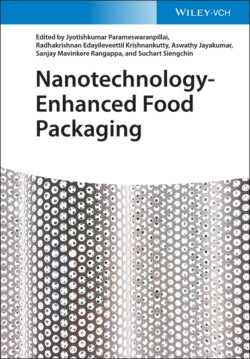Читать книгу Nanotechnology-Enhanced Food Packaging - Группа авторов - Страница 34
2.1 Introduction
ОглавлениеIn the last years, polymers isolated from renewable raw materials have been studied as alternative to synthetic polymers for food packaging applications [1]. Synthetic polymers-based films are thin layers, between 50 and 80 μm. These materials have excellent barrier properties against several gases (e.g. H2O, O2, and CO2), as well as against biological, chemical, and physical contaminants [1, 2]. However, synthetic polymers are derived from petroleum, a nonrenewable resource, and they can be classified as nondegradable materials, negatively impacting the ecosystems [3]. In this sense, several researchers have focused to replace synthetic polymers by polymers from natural sources, also called as biopolymers [4–9]. Several biopolymers have been used to manufacture films and coatings due to the good film-forming properties of these macromolecules. Furthermore, these macromolecules can be isolated directly from biomass or they can be synthetized using microbial routes, as well as by means of chemical synthesis using monomers from agro-resources [3, 10, 11].
Food packaging based on biopolymers are sensitive to the relative humidity and temperature. In recent years, the development of advanced films and coatings based on biopolymers has been explored and applied to extend the shelf life of foods, as well as to improve food safety, quality, and convenience to consumers [3]. The objective of this chapter is to review the new strategies to manufacture biopolymers-based films and coatings, aiming their applications on foods, as well as the prospects and limitations of these materials for food packaging sector.
